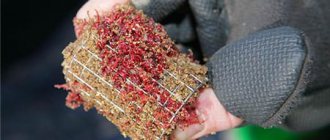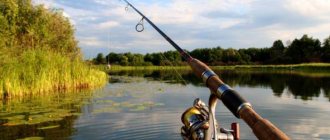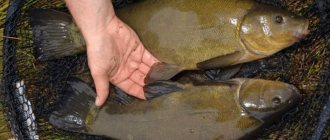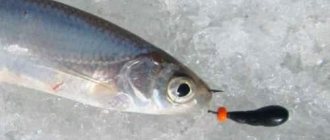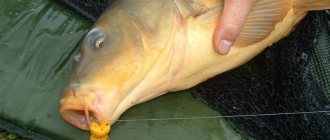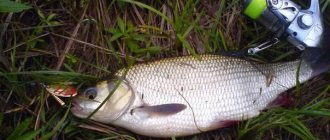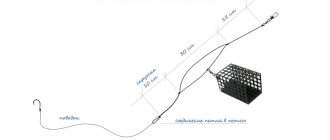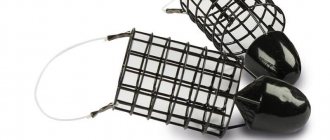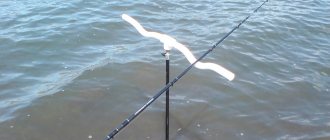The preparatory stage of feeder fishing gives a true fisherman no less pleasure than waiting for a bite on the shore of a reservoir or the moment of retrieving a pecked fish. This stage is the process of preparing bait for the feeder with your own hands.
Each fisherman develops the best recipes himself, by selecting the most catchy ingredients and their combinations. The taste preferences of fish vary depending on its type, the characteristics of a particular body of water, the season, the weather - many subtle nuances. That treat that the roach reliably pecks at may not please the bream at all. And what worked great in the heat is not at all suitable for ice fishing.
However, there are almost universal compositions that are time-tested and proven to be effective. If you have never fished with a feeder before or used commercial bait, start with these ready-made recipes. When you get the hang of it and are ready for creativity, they will become the basis for experimentation.
The best recipes for feeding the feeder with your own hands:
- Universal bait for crucian carp, bream and carp
- Bait for bream
- Summer bait for bream
- Feeder bait for crucian carp
- Bait for the feeder for bream
- Autumn bait for catching bream on a feeder
- Universal feeder bait
- Summer bait for feeder fishing on the river
- Spring bait for feeder
- Autumn bait for feeder fishing on the river
- “Fried” bait for white fish
- Catchy bream bait
- Groundbait for feeder with corn
What you need to know to prepare bait for your feeder with your own hands
Any feeder bait consists of a base and additives. Their ratio ranges from 80/20 to 50/50. To simply attract fish, one basic is enough. But to really interest her, to make her stand in one place waiting for another tasty morsel, you need a properly selected supplement.
as a base : dry cereal with a fine fraction (semolina, oatmeal, oatmeal), crushed baked goods or confectionery products, pureed cake, crushed peanuts, sunflower or pumpkin seeds, hemp seeds, coriander grains, milk powder, fish meal.
The task of the base is to provide the necessary consistency, crumbly or viscous, which will create a feed cloud in appropriate conditions. What exactly your bait should be depends on the characteristics of the place where you will be fishing.
- The stronger the current, the more viscous the bait should be so that it does not wash away too quickly.
- A mixture that is too loose will easily scatter when casting when it hits the water and will dissipate before it has time to sink to the bottom.
- The components of the base are interchangeable, but each of them behaves differently at different temperatures, transparency, and other characteristics of water.
In addition, the base should be dusty enough to attract the attention of fish even from afar. And then the additional ingredients come into play.
additive particles are larger in size. They are used to ensure that the fish, attracted by the base, find something to eat and linger in search of new delicacies. The additive loaded into the feeder should not scatter far, causing the fish to circle around the baited hook. At the same time, the radius should be sufficient so that even the most fastidious gourmet forgets about caution and cannot deny herself the pleasure of eating your treat.
For this, steamed bran, wheat, pearl barley, peas, corn, and various cereals are used. Of the animal components, chopped worms, bloodworms, and maggots are added to the bait.
- An important rule: the bait must contain a delicacy that is used as bait on the hook.
- To cook porridge for bait, just bring the cereal, filled with water in a ratio of 1:2, to a boil, then wrap the pan and put it in a warm place overnight. A small amount of cereal (for example, a glass) can be steamed in a thermos.
In addition, the bait for the feeder contains flavorings and natural flavor enhancers that stimulate the fish’s appetite. For this use:
- aroma oils;
- fruit syrups;
- honey;
- caramel and caramel essence;
- coffee, chocolate, cocoa;
- vanillin, cinnamon, ginger;
- other fragrant spices.
Modern industry offers an artificial substitute for each of these ingredients. However, experienced fishermen claim that fish like natural products more and bite on them more often.
How to fill a feeder feeder with bait
Filling the feeder with a mixture of base and additives or laying them in layers is not important. In each specific case, you can try both options and decide which one works better in your conditions.
Much more important is how firmly to compact the bait .
The feeder should be released within 5-10 minutes to form a stable bait spot. This is what determines the desired density and viscosity of the prepared treat.
Composition of bait for feeder fishing
To get high-quality bait, you should connect together 3 main parts :
- main cast;
- filler with various additives;
- flavoring agent or flavor enhancer.
- The basis of feeder bait consists of small particles that are in dry form: cereals, baked goods, small cakes, grains, etc. The purpose of this part of the bait mixture is to create dusty clouds that additionally attract fish.
- Large ingredients of cooked cereal grains, peas, corn, etc. are used as additives. Thanks to large particles, the fish remains in a certain place for a long time. As a rule, large particles of food attract large specimens of crucian carp, bream, carp, carp, etc.
- Flavorings and attractants are designed to improve gastronomic performance. They should be used very carefully and in small doses. For this you can use aromas of cocoa, coffee, vanilla, honey, caramel, etc.
How attractive the bait is is influenced by its general color background on the bottom of the reservoir. If the bottom of a river or pond is dark and there is light bait in the feeder, this may alert the fish. In this case, active fishing will not work. Therefore, in order to prepare an attractive feeder, you should know many subtleties.
Universal bait for crucian carp, bream and carp
Universal bait for crucian carp, bream and carp
In addition to its versatility, this feeder bait is also good for its low cost (due to the cheapness of the components) and speed of preparation.
The basis:
For 5 parts of flour products (crumbs, crushed cookies, crumbled gingerbread or baked goods), take 1 part:
- bran or broken rice (dry),
- sunflower cake,
- semolina,
- corn, barley or other fine grains (chaff), crushed rolled oatmeal or oatmeal.
The proportions can be slightly adjusted taking into account the fact that bread, semolina, oatmeal, chaff or corn grits, when swelling, make the bait sticky. The bran and cake create a cloudy cloud that attracts fish from all over the pond.
It’s good to mix a little dry milk, crushed roasted seeds or peanuts, crushed flax seeds, hemp or coriander into the base. You can also use some commercial bait that is suitable for the season, the body of water and the fish you want to catch.
Additive:
- to attract crucian carp and carp , barley is cooked;
- for bream , steamed peas are added to the bait base;
- all species respond well to bright yellow millet.
Best bait recipe
The bait for the “Method” feeder is prepared quite simply with your own hands, but the fisherman will need to take into account one nuance - the binding components and rippers must be optimally combined with each other, only in this case will it be possible to achieve the desired consistency. What components will you need to stock up on?
The bait consisting of the following ingredients has very good reviews:
- small white cracker;
- a pinch of semolina;
- 0.2 g corn flour;
- 0.1 g wheat bran (can be replaced with others);
- 2 crushed sunflower seeds;
- a handful of powdered milk.
All these components must be thoroughly mixed and moistened; in the end, the mass should be quite thick, so it will muddy the water and will not disintegrate after casting. It is better to use a corn stalk as a base for bait.
Baits based on fermented seeds have also proven themselves to be excellent. As practice shows, such smells attract a wide variety of fish, so crushed fermented wheat can also be added to complementary foods.
Bait for bream
Using the same components as indicated above, we adjust the composition to the preferences of the bream:
- slightly reduce the dusty components - they attract small fish, the bream will swim past the swirling school;
- thoroughly mix the bait until smooth - the lumps will quickly saturate the fish and make them leave;
- Natural flavors are preferable - vegetable oils, spicy seeds, extracts, mashed fruits and berries.
In winter, it is better to completely abandon bright odors, adding protein elements instead - bloodworms, worms, maggots, burdock. A suitable attractant during this period would be dry blood (at the rate of 1 tbsp per 1 kg of prepared bait).
Depending on the color of the bottom, the shade of the bait is adjusted:
- for areas with a dark muddy bottom, bait made from rye crackers is better;
- For a light sandy, dense clay bottom, wheat bread, muffins, and light cookies are more effective.
Theory and practice of complementary feeding
Before we start talking about the components of mixtures and tips on how to mix them into a single whole, let's talk about the tactics of feeding fish in a pond. This knowledge will help to better understand the “chemistry” of the process.
Feeding in feeder fishing is one of the most important processes in this type of bottom fishing.
The purpose of this process is to create a limited zone at the bottom of the reservoir containing food particles attractive to fish. Moreover, it is desirable for this spot to look like a continuous blanket of small fractions interspersed with coarse food.
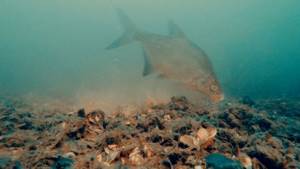
Various peaceful fish gather at the bait spot to poke around to their heart's content in search of especially tasty particles.
The second important factor in feeding tactics is its continuity. This must be done so that the fish “stands” on the bait spot and does not try to look for another appetizing spot. This is where the whole essence of the feeder tackle comes into play, delivering additional treats to the selected point with each subsequent cast.
Therefore, proper feeding in feeder fishing is divided into two important stages:
- starting;
- additional, carried out during the fishing process.
The purpose of starting feeding is precisely to create that very attractive spot for fish at the bottom of the reservoir. For this purpose, 5-10 casts of the feeder are made to the selected point, depending on its volume.
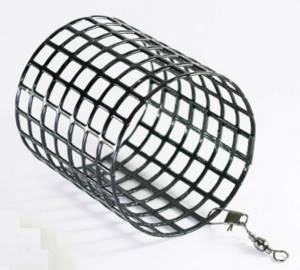
Feeding troughs are often not even weighted; their volume allows them to contain a mixture sufficient for a good casting of the feed mass.
Attention! To make accurate casts, you need to select a landmark on the opposite bank and clip the line onto the reel.
Once the spot on the bottom has been formed, you can place it on a standard-sized feeder and attach a leash with a hook. Now each cast will add an amount of mixture to the original volume so that the catching point does not lose its attractiveness.
Feeder bait for crucian carp
- 1 cup oatmeal;
- 1 cup breadcrumbs;
- 350 gr. crushed cake (seed cake is also suitable);
- 100 gr. crushed roasted peanuts;
- 150 gr. live food that will serve as bait.
It is good to flavor crucian carp bait for the feeder with vanilla or anise.
An excellent result is also obtained if, before casting, you add effervescent vitamins to the feeder with bait. This technique arouses interest even among well-fed and sleepy fish.
The best brands and models of baits
Ready-made baits can be budget or professional. The best mixtures in each specific case are determined only experimentally. The leading manufacturers of feeder baits are Sensas, VDE. “Profi”, FishDream, “UNIKORM”, “DUNAEV”, Top Sekret are also in demand.
Sensas
Sensas 3000 Super Fond bait in the hands of world champion feeder Alexey Fadeev
- Sensas 3000 Feeder. Specializes in bream. Light-colored groundbait with large, coarse components. Also contains enough binders to stay in the feeder. It immediately starts working on the bottom.
- 3000 Super Fond. Super heavy and coarse-grained, light and very viscous bait. It contains colored granules. Specializes in catching large fish in the current.
- VDE (Marcel Van Den Eynde) also offers specialized models. They can be considered as an alternative to Sensas.
- Super Champion Feeder. Large and nutritious bait for the feeder. Works well for catching bream.
- DS Feeder Dutch Special Feeder has a complex aroma. Can be used when fishing on a feeder. The bait is used in deep water with current. It contains corn flour, cake, mixed nuts, vanilla, ground hemp, and a bream attractant. The bait consists of small and large feed particles.
- Gold Pro Bream is a fast-acting sports mixture, thick and nutritious. It can be used to attract bream. Has medium fractions. Has a sweet taste. The bait contains natural amino acids, which increase the feeling of hunger in bream.
- Method Mix. Very sticky, balanced and completely self-sufficient bait. Designed for feeder fishing. Contains large amounts of fishmeal. It can be used in its pure form. It must be mixed in three steps, since the bait must be well moistened and must remain airy.
UNICORM
- "Bream". The emphasis in bait is on the spice of the smell. Light bait with soft flavoring and a high content of special “bream” corn fraction.
- Feeder. A universal option. A medium dispersion mixture, brown in color, containing crushed grains, large amounts of bran and bright red particles. The intensity of the smell is inferior to most baits, but this degree of aromatization is appropriate when fishing in cold water. The bait begins to erode almost immediately (if properly prepared), releasing air bubbles and floating particles. It is applicable both in current and in still water.
Autumn bait for catching bream on a feeder

Bait for bream
- 1.5 kg breadcrumbs;
- 1 kg of ground cookies;
- 1 kg oat flour;
- 1 kg of corn grits;
- 0.5 kg of rolled oats;
- 0.3 kg of roasted seeds;
- 60 gr. ground cinnamon;
- 0.25 gr. cocoa powder
The consistency of the finished bait can be adjusted on site by mixing coastal soil for viscosity.
Summer bait for feeder fishing on the river
- 400 gr. sunflower cake;
- 200 gr. breadcrumbs or bread crumbs;
- 400 gr. ground peas;
- 400 gr. boiled rolled oats porridge;
- 6 teaspoons ground coriander.
The pulp plays the main role in this recipe. It can be from sunflower seeds, pumpkin, hemp, rapeseed, flax. The taste preferences of fish in each body of water vary depending on the season, weather, and time of day.
Clay becomes the binding component. By mixing it, you regulate the viscosity of the bait and the speed at which it is washed out of the feeder.
Composition depending on the time of year
There are significant nuances in the preparation of feed, depending on the time of fishing. The composition of bait ingredients changes with the variability of the fish’s preferences for choosing a certain food supply. So in the summer, in warm waters, fish feed more on plant foods and are willing to eat strong sweet aromas. In cold water, nutrition shifts towards the animal component, and less emphasis is placed on flavorings, reducing the amount of attractant in the feed. Let's give an example of feed according to the seasons of the year.
Spring
Millet bait for feeder fishing in the spring shows some of the best results. The composition is mixed according to the following scheme: a base of millet porridge in a volume of 200 grams is filled with food bloodworms, approximately 4-5 matchboxes of larvae. Sunflower cake is added to the mixture - 150 grams, bran - 100 grams, milk powder - 50 grams and the whole composition is diluted to the desired consistency with river sand or clay.
Summer
The recipe for summer feeding is as follows. We take half a kilo of ground cake as a basis. This could be a sunflower, pumpkin, flax, rapeseed or hemp version of the product. We dilute the cake with breadcrumbs to half the volume. Next add crushed peas and oatmeal, about 400 grams. We flavor the bait with coriander, cinnamon, vanilla, cocoa, honey or molasses, depending on the preferences of the fish, adding 7-10 teaspoons of attractant to the mix.
Autumn
Autumn bait for the feeder is prepared on the basis of breadcrumbs - 500 grams, with the addition of 100 grams of lard cut in a meat grinder. The mash is supplemented with 200 grams of sunflower cake and the same amount of rice porridge. The baking powder in the mixture is wheat or rye bran in a volume of 150 grams. At the last stage of cooking, just before serving the bait to the table, the mixed mixture is seasoned with food bloodworms, a portion equal to at least ten volumes of matchboxes.
“Fried” bait for white fish
This mixture is perfect not only for the feeder, but also for sculpting bait balls when fishing with a float rod.
- 400 gr. wheat;
- 200 gr. Hercules;
- 100 gr. sunflower seeds;
- 400 gr. breadcrumbs;
- 100 gr. powdered milk or rice flour (you can use powdered infant formula);
- 400 gr. corn grits;
- 50 gr. flax or hemp seeds;
- 50 gr. vanilla sugar;
- Red food coloring or finely grated beets.
Alternately fry wheat, rolled oats, sunflower seeds, flax/hemp seeds in vegetable oil until golden brown. Grind them in a coffee grinder. There is no need to wash it into dust; let the bait contain elements of a large fraction - this is more likely to attract large fish.
Flax or hemp seeds must be present in the composition. It has long been proven that they have a laxative effect on fish. Thanks to this, she cannot get enough, continuing to spin around in the place you fed.
Mix the roasted grains and seeds with the remaining ingredients.
We paint with beets directly on the spot, before filling the feeder and casting. It is the red color that perfectly attracts white fish even in muddy water.
Using a sieve for bait
Wet bait, sifted through a sieve, produces much more dust, releases more bubbles, and disintegrates much faster.
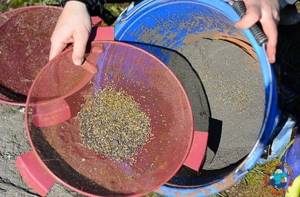
It is highly recommended to use a sieve on ponds with standing water. But for fishing in strong currents, the use of a sieve is doubtful. You can clearly see how the bait balls disintegrate from the video.
Catchy bream bait

Catchy bait
- 1 cup pearl barley;
- 1 glass of millet;
- 2 cups corn or barley grits;
- 1 cup peas;
- 2-3 teaspoons of hemp seed;
- a few grains of cloves;
- a pinch of dry thyme (thyme);
- 1 cup pistachios or peanuts;
- breadcrumbs.
A glass of pearl barley is poured with 2 glasses of water and cooked for about 20 minutes over low heat. Then millet is poured into the same container and another 1 glass of water is added. After 5-10 minutes, thyme and cloves are added.
When there is very little water left, chaff and hemp seeds are added. Everything gets mixed up. The closed pan is wrapped in a blanket and left until the morning.
Peas are pre-soaked for 10-12 hours. Then it is cooked until soft and twisted in a meat grinder.
The nuts are roasted (in the microwave) and crushed.
Before going fishing, all components (porridge, peas, nuts) are combined. The bait is brought to the desired consistency with breadcrumbs so that it stays in the feeder for about 10 minutes. It is best to do this on the spot, having decided on the speed of the current.
Groundbait for feeder with corn
- 200 gr. barley;
- 200 gr. millet;
- 400 gr. Hercules;
- 200 gr. breadcrumbs;
- 200 gr. canned corn;
- 150 gr. corn grits;
- 50 gr. oatmeal or oatmeal;
- 100 ml molasses;
- 10 gr. vanillin;
- 30 gr. ground cinnamon.
This bait is similar to corn when catching carp, bream, carp, roach, and crucian carp.
Cook the pearl barley until half cooked. Add millet to it and cook together.
We constantly monitor the water level: it should not be completely absorbed immediately; in the remaining 100-150 ml of liquid, the cereal will swell as it cools.
Add cinnamon and vanillin to the still warm porridge and stir thoroughly.
Just before fishing, combine the porridge and corn kernels. To bring the bait to the desired consistency, add brine from a can of corn into it.
How much bait do you need to prepare for the feeder?
With your own hands you will prepare exactly the amount of bait you need for your planned fishing trip.
We calculate the quantity using the formula:
V = (3.14 * 2D * H) / 4
V – total volume, in cubic cm;
D – diameter of the feeder used, cm;
H – height of the feeder, in cm.
Next, we determine how long the fishing is planned and how often we plan to cast. Based on this, we determine the number of casts (X).
We multiply V and X and get the required volume of bait. To determine the amount in liters, divide the resulting cm3 by 1000.
It is worth adding 10-15% to the resulting volume, and taking dry ingredients with you so that you will definitely have enough, even if the fishing lasts longer than expected.
How to store prepared bait
You can prepare dry bait for the feeder with your own hands in advance, in large quantities, and store it until the happy moment of fishing.
To do this, mix all the bulk ingredients in a large container, and then scatter them into thick plastic bags or plastic containers with an airtight lid.
When going fishing, it will be enough to combine this mixture with steamed cereals, porridge or live food to get ready-made feeder bait. This will help significantly save time, which is especially important for sudden gatherings.
If the mixture turns out to be too thick, it can be easily diluted by adding water from a reservoir. If you overdid it with the liquid, add a little dry bait from the supply you took with you.
Any flavors are added directly on site, before filling the feeder.
Preparing homemade feeder bait for bream for fishing in the current
The bait should keep the bream fed for as long as possible in conditions of strong or medium currents, so it is advisable to exclude the use of bran, hemp cake, coconut flakes or sunflower seed cake in the composition.
The husk floats up easily. This attracts small fish, which can negatively affect the bite. The bait must be viscous in order to reach the bottom intact. The bait should start working the moment the feeder reaches the bottom. If the mixture comes out of the feeder during a dive, it will be carried away by the current along with the stern. If it is not washed out for a long time, it will be more difficult to feed the bait, since for the next cast you need to wait for the feeder to be cleared.
If you fish in the current, then you need to add special glue or corn flour to the mixture (one hundred grams per kilogram of the mixture). These ingredients give the bait its viscosity. It is better to take millet as a nutrient component for bait, as it has the necessary viscosity and is very to the taste of bream.
In addition to traditional ingredients, large compound feeds are also added to the feeder bait for bream. It is best to add part of the bait used to the bait, i.e. chopped worm, maggot, large bloodworms, corn. Cereals, cake, and milk powder form an attractive cloud of turbidity in the water. Solid components of the bait (cake, crackers, bran) must be ground finely. The food stain should blend in with the color of the bottom. If the stain is lighter, the bream will not be suitable for such food. The small bream is not so careful, and the color contrast of the bait does not particularly bother him. To prevent the bait from floating away with the flow, it should be weighted with large fractions (clay, soil from a reservoir).
Before use, the bait must be soaked for ten hours. It should be stored in a dark and cool place. Then, directly on the pond, you need to add water and clay. It is better to take clay from the same reservoir in which you plan to fish. When fishing for large bream, the color of the clay should blend in with the color of the soil in the pond. When fishing for bream, the use of breadcrumbs (wheat or rye) also depends on the color of the soil in the area. You can also add special “bream” flavors.
After moistening the bait, you need to wait fifteen minutes so that each particle absorbs the water.
Where to buy bait products
If you purchase bait products in regular stores, the cost of the finished mixture will be no less than that purchased. But there are some secrets that will help you save a lot.
- Bran, wheat, millet, corn, buckwheat (green) should be bought in stores that sell feed for poultry.
- In retail outlets selling confectionery products, you can buy scrap cookies at a reduced price. Sometimes manufacturers sell substandard products - it’s even cheaper.
- In specialized stores and confectionery departments where ingredients for cakes are purchased, you can purchase vanillin, cinnamon, cocoa, fruit syrups and essences by weight. It's much cheaper than packaged spices. For example, 1 gr. A bag of vanillin costs 5 rubles. By weight, the cost of 1 kg of vanillin is 400 rubles; It is not necessary to take a kilogram at once, they will weigh less.
- Breadcrumbs can be replaced with stale bread, minced in a meat grinder or food processor. In a bakery store, as a rule, substandard bread and bread that was not sold on time are sold at a reduced price. The fish will not guess about this - you can safely use it.
Preparing bait for a feeder with your own hands is a creative and exciting process. By trying different recipes and making your own adjustments to them, you can experimentally select those combinations that not a single fish in the place you feed can resist.
Who invented Salapin porridge?
Almost everything related to feeder fishing came to us from abroad. The British are the trendsetters in this direction, so you might think that the salapina was also created by some Harry Smith. But in fact, the author of this catchy composition is Russian citizen Dmitry Salapin, an avid fisherman and blogger who actively promotes English bottom fishing. His famous recipe has not only been floating around fishing sites for the last few years, many of our fishermen have already appreciated it and expressed their boundless gratitude.
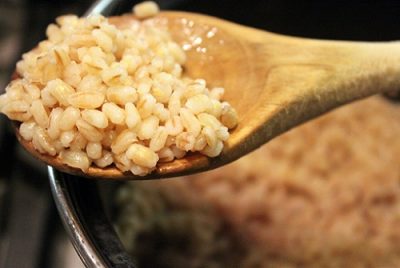
According to Dmitry, he just wanted to prepare an effective bait for bream from improvised products that were found in the kitchen. Fishermen use each of its components in homemade mixtures, but no one has ever tried it in such a combination. The result exceeded all expectations - not only bream, but also other fish of the carp family were caught perfectly. Over time, the porridge became known to the fishing community and was named after its author. In some regions, some feeders try to experiment with its composition, adapting to the conditions and taste preferences of the fished object, but in most cases, fishermen use exactly the basic composition proposed by Salapin.
